The CleanPower Expo, an annual industry event held by the American Clean Power Association, convened over 8,000 industry professionals and featured hundreds of speakers and exhibitors sharing their insights on today’s renewable energy market. This year, the event was located in New Orleans, Louisiana, and among the jazz, seafood, and rich cultural history, the CleanPower Expo brought together thought leaders and decision-makers that are guiding the energy transition.
One unique aspect of the event was the introduction of e-poster presentations. Participating firms and businesses submitted electronic documents to be featured in a conference room, and posters were presented by their creators in a session. pv magazine USA received access to these posters, and below are five that caught this author’s eye.
Note: The posters may appear small or blurry, right click and download the high-resolution image to view at full-size.
1) U.S. Solar Manufacturing Update: Expectations versus Reality
Clean Energy Associates
The IRA represents a sea change in U.S. energy policy, providing dedicated production-level incentives to offset the higher cost of making solar in the United States. But despite a host of announcements promising new manufacturing investments, it remains a long way from press releases to power plants and progress to date is highly uneven along the value chain.
This presentation explored the disparity between module assembly and other stages of production. Currently, ingot, wafer, and cell production plans have not kept pace, and no plans for greenfield polysilicon plants have materialized.
While IRA incentives are generous, the United States may need further policy development to achieve a full domestic PV supply chain. This presentation will explore potential evolutionary actions including select expansion of the Section 45x incentives and use of the Defense Production Act. And it will look at how the IRA could to serve as the start of a more comprehensive industrial policy similar to that in other global economies.
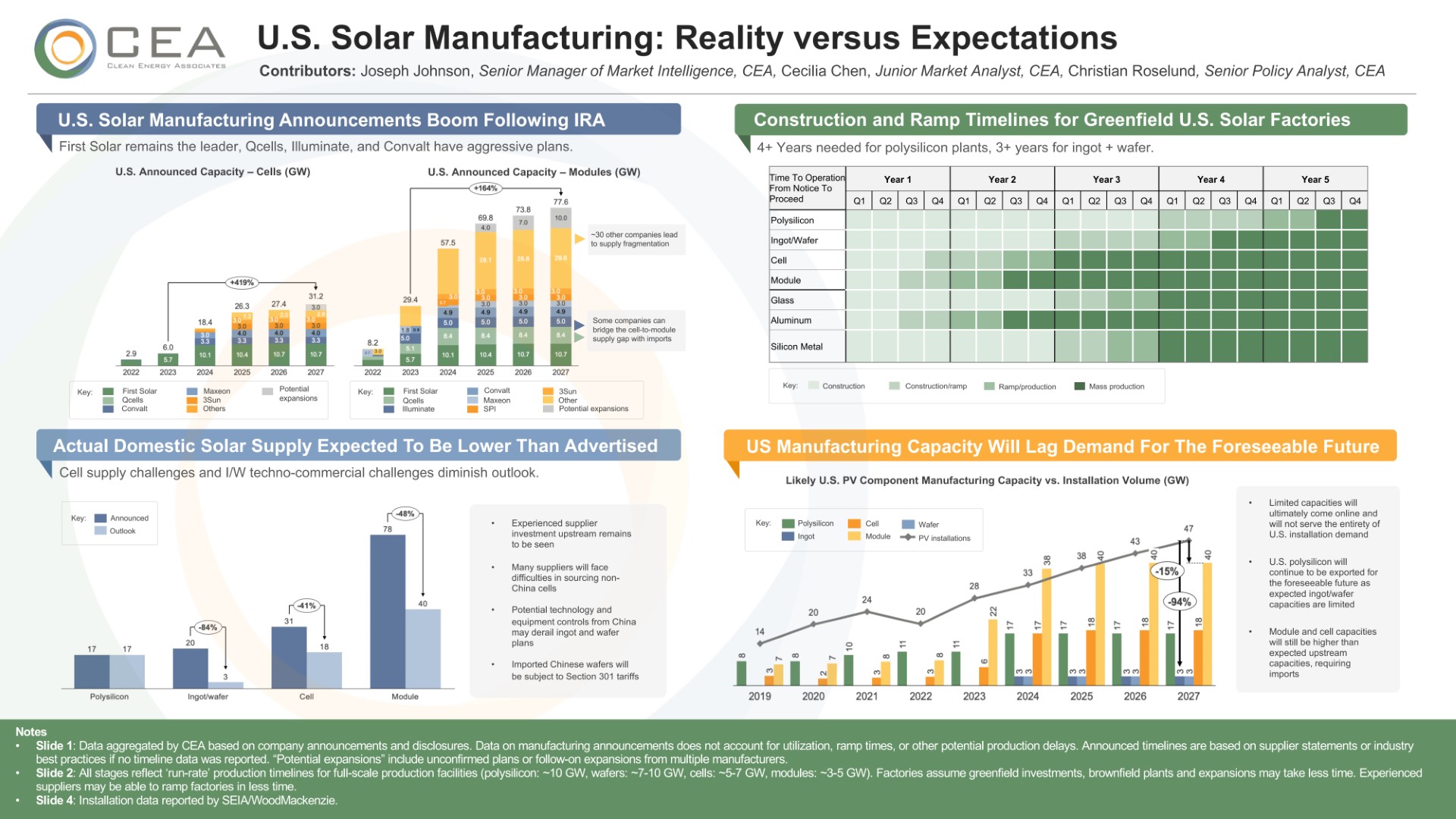
2) Solar Farming: Opportunities and Challenges of Integrating Solar & Regenerative Agriculture
Stephen Brown, PE, PMP, MEng – Duke Energy
The report explores challenges to agrivoltaics: community pushback against large-scale solar, more efficient land-use, preservation of farming community culture. The presentation discussed a major challenge for farming communities today – loss of fertile topsoil – which is driving higher input costs and placing risk on future food supply. The report offered a high-level overview on regenerative agriculture principles of no-till, cover-cropping, crop diversity and grazing.
Cover cropping has been shown to provide a cooling effect (1% annual energy production increase found in one study), as well as more favorable albedo gains for bifacial modules (25% backside gains in another study). Through each practice (no-till, cover cropping, crop diversity and grazing) the presentation highlighted research studies or real-world examples that show the opportunity to integrate these practices.
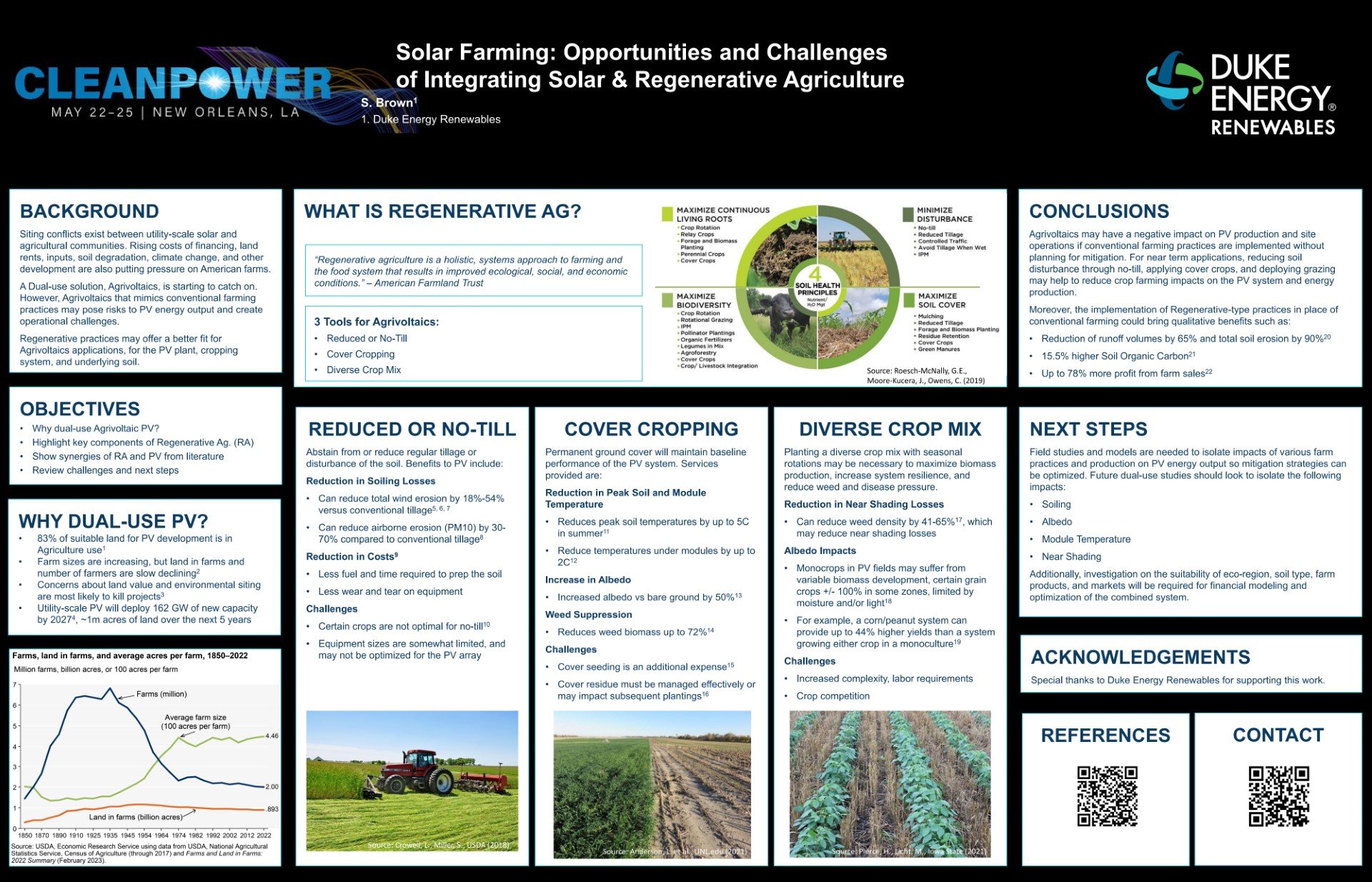
3) Field Characterization and Performance Evaluation of Bifacial Photovoltaic Solar Panels at Louisiana Solar Energy Laboratory
University of Louisiana – Lafayette
Bifacial PV offers several advantages, including increased energy output and installation flexibility. Bifacial cells generate from both sides of the panel, allowing more sunlight to be captured than monofacial panels. According to the International Technology Roadmap for Photovoltaic 2019, bifacial cells are expected to triple their current value in 2030 with market share increasing to 60% by 2027.
University of Louisiana’s research results show that bifacial modules can generate 18% more than their monofacial counterparts. To improve bifacial system performance, challenges in non-uniform rear-side irradiance, shading, and racking systems should be considered, said the report.
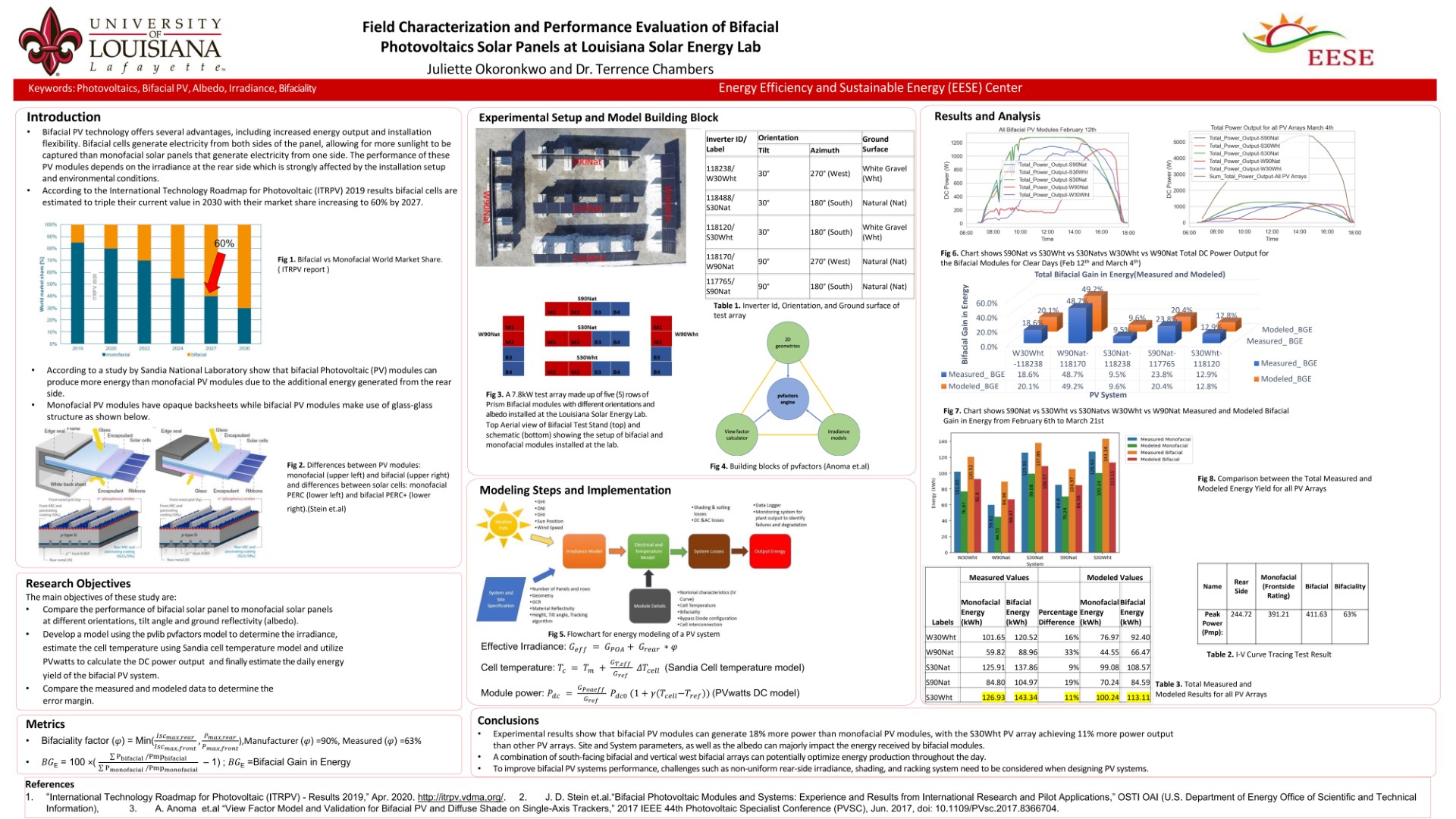
4) Optimizing Solar and Storage Projects for Clean Peak Standards
Nehal Y. Divekar, Customized Energy Solutions Ltd
Energy storage is adept at integrating and shifting solar energy to times of desired use or avoiding grid consumption during peak demand on the system. The Massachusetts Clean Peak Standard has established incentives in the form of monetizable Clean Peak Energy Certificates for resources having that capability. There are also other incentive programs like MA SMART that interface and have a bearing on a project participating in the CPS program. By purpose, these incentives have the potential to fill the ‘revenue gap’, between project costs and market revenues.
However, discretional choices with project design, ratings, location, or changes to externalities like policy futures or utility rates have the potential to significantly change the revenue gaps. Using representative sites, this presentation shed light on how such choices alter the overall project economics and identify the big value and cost drivers.
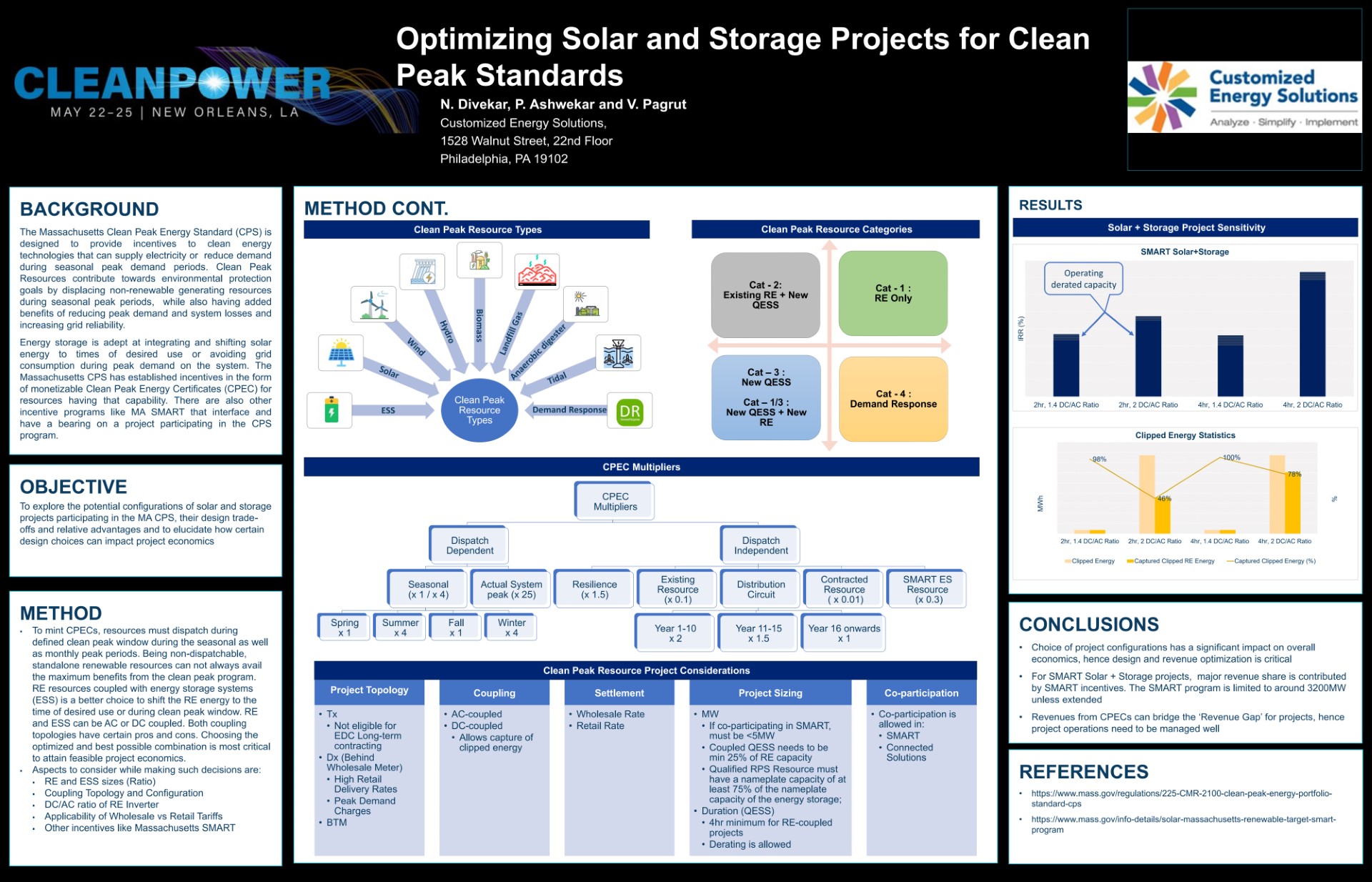
5) Anticipating Construction Compliance Wildlife Monitoring Issues at PV Solar Projects in the Southwestern U.S.
Cyrus Moqtaderi, Western EcoSystems Technology, Inc. (WEST)
Developing solar in the range of sensitive wildlife species can introduce complexities in project permitting and construction. State and federal wildlife agencies often advise on project requirements throughout the permitting process, and generally recommend measures to avoid, minimize, and mitigate impacts to sensitive species. This process generally results in issuance of one or more permits requiring compliance monitoring throughout project construction and operation.
However, permit conditions, as written, are often sparsely detailed and not written with a holistic understanding of project timelines and logistics. As such, developers often rely on consultants to interpret time and cost implications and translate permit requirements into actions that simultaneously fulfill mitigation and project timeline goals.
In the Southwestern US, where PV solar energy development is expanding rapidly, the presence of federally endangered Mojave desert tortoise and state sensitive burrowing owl at a PV solar site will likely result in permit conditions requiring mitigation, clearance surveys, construction timing constraints, and no-disturbance buffers. Developers and consultants without a nuanced understanding of how permit requirements interplay with construction schedules often face unanticipated delays and costs.
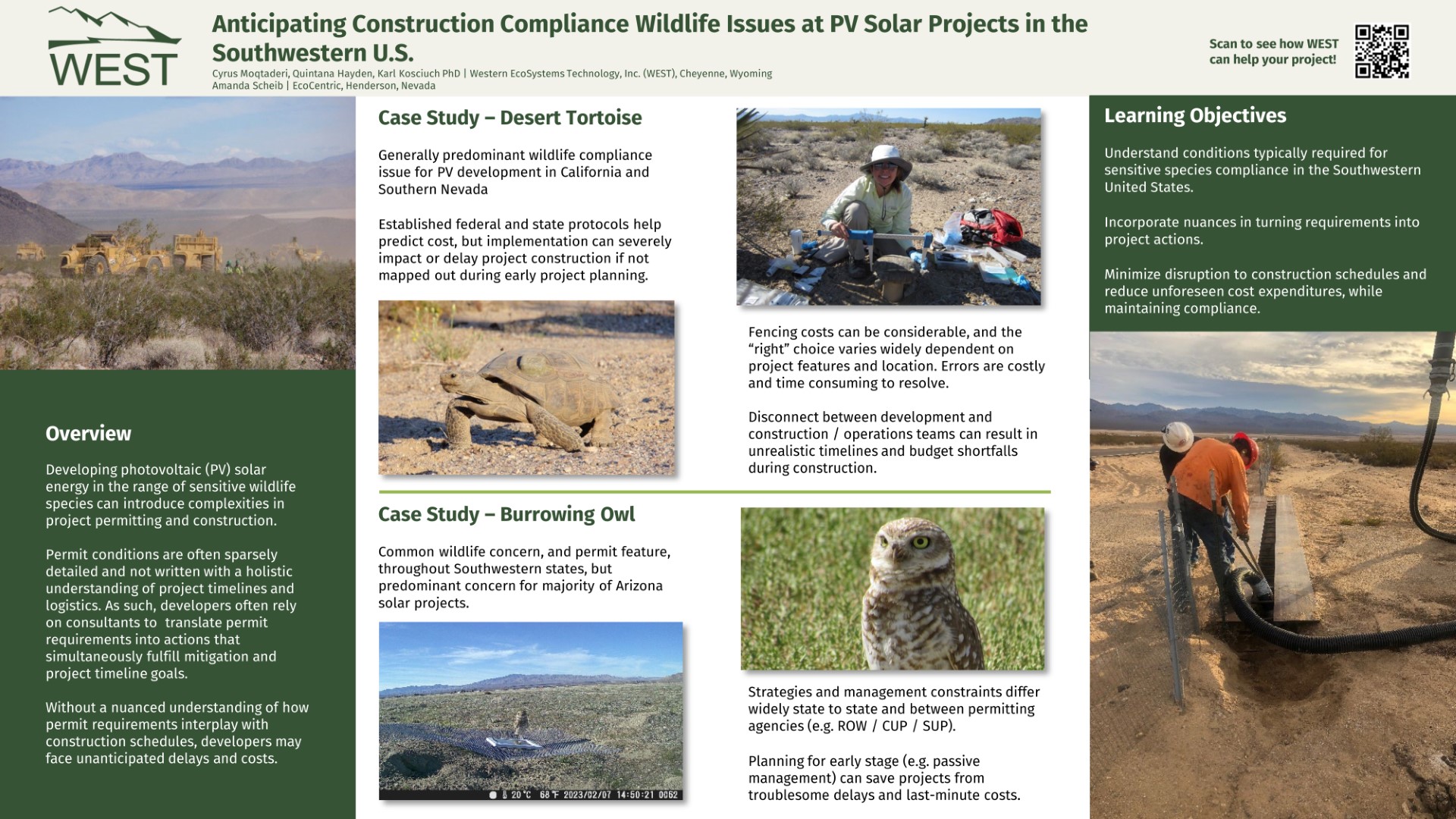
Special thanks to the American Clean Power Association for another eventful CleanPower Expo this year.
This content is protected by copyright and may not be reused. If you want to cooperate with us and would like to reuse some of our content, please contact: editors@pv-magazine.com.









Downloadable PDF files the posters or links to the PDF files would be nice.